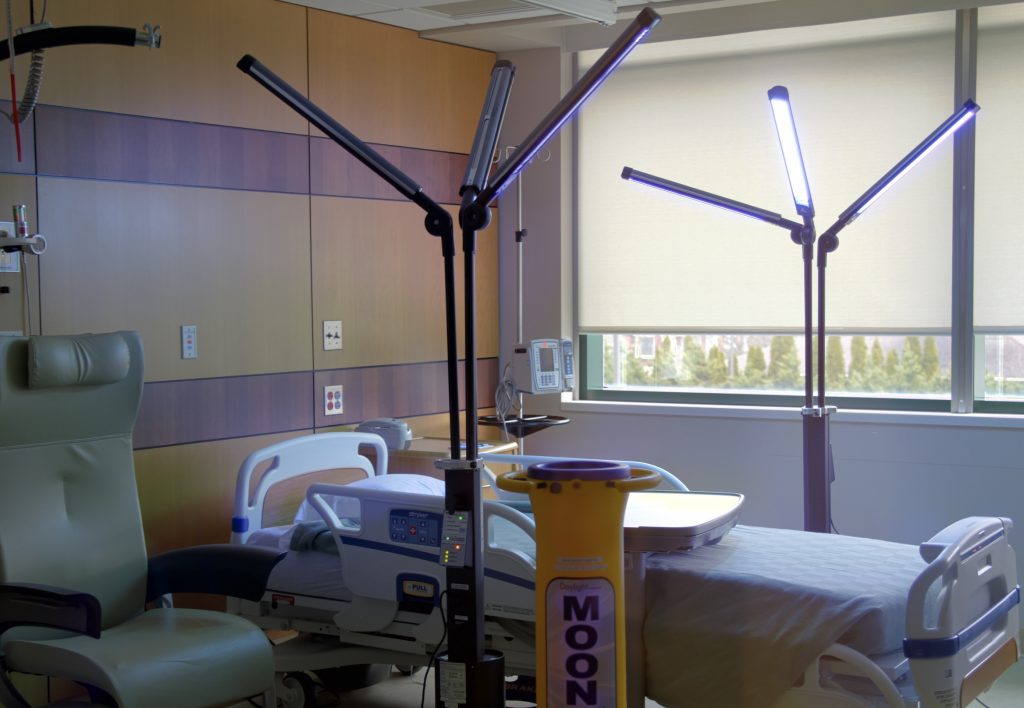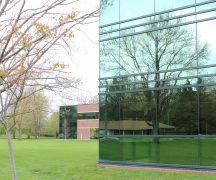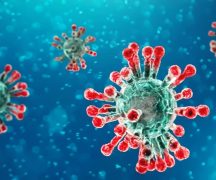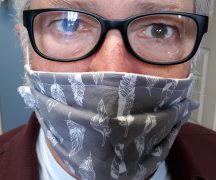By JAN LARSON McLAUGHLIN
BG Independent News
Wood County Hospital is preparing for the wave of coronavirus expected to hit here in a couple weeks and possibly linger through May.
The administration has worked to find more ventilators, create more bed space, secure more COVID-19 tests, and get more face masks and other personal protective equipment.
The staff has been stepping up disinfecting efforts, and preparing for a surge in patients.
The public has been asked to forgo elective surgeries and refrain from visiting patients at the hospital. And community members with sewing skills have been sending makeshift masks to the facility.
As of Sunday, Wood County had 12 confirmed cases of COVID-19. Six of those people are hospitalized – none at Wood County Hospital.
But it’s only a matter of time before the Bowling Green hospital is hit by the approaching wave.
“We are not a very densely populated county. We’re behind those hot epicenters,” said Wood County Hospital Medical Director Dr. Michael Lemon.
All the COVID-19 tests done at the hospital have come back negative. But Lemon acknowledged the tests are limited, with fewer than 100 having been conducted at the hospital.
“It’s a small number because there’s a small number of tests available,” he said.
But the administration continues to work to secure more test kits.
“Our CEO has been relentless trying to find other sources,” Lemon said of Stan Korducki.
Currently, the tests are being reserved for patients who exhibit symptoms of the virus, and hospital staff and first responders who care for them.
“We do have a limited supply here,” said Wood County Hospital Infection Preventionist Cheresa Hadsell. “We are focusing on the critically ill patients first.”
The planning for COVID-19 began early this year, Hadsell said.
“We heard the horror stories” from hospitals in hard-hit areas, Hadsell said.
“We’ve been monitoring PPE supplies since January,” she said. Efforts have been made to follow CDC guidelines on preservation of masks and other protective equipment. “We have taken precautions to preserve our precious supplies of PPEs.”
Help from the community in supplying masks is most appreciated, Lemon said.
“The community outpouring has been wonderful,” Lemon said. The homemade masks are being used by many appreciative oncology patients, he added. “Thank you to all the community-minded people who are donating.”
The hospital has also been trying to stock up on ventilators. As of Friday, the hospital had 43 available.
“We have been working on those for weeks,” Lemon said. “We did successfully double our number.”
The hospital’s contingency plan is being tweaked frequently to meet changes.
“We are preparing for that upswing,” Hadsell said. “We have been following updates from the governor and the Ohio Department of Health – going by their predictions,” which so far have been quite accurate.
Hospital staff members have also increased cleaning, especially on surfaces that are frequently touched.
“Each week they step it up more,” Hadsell said.
Last year, the hospital started using UV disinfection technology, with a device called MoonBeam 3. The device uses UVC disinfecting technology to kill germs on high-touch services. It works by generating a broad umbrella of intense UVC light. The rays reach 8-12 feet from where the stand is placed.

The rays can disinfect an area in as little as three minutes. Between the normal cleaning processes and the UVC rays, 99.9% of viruses and bacteria are killed during cleaning, according to Cristy Walton, vice president of development at Wood County Hospital.
The new system has been used in areas of concern, like operating rooms. But now it is being employed in other areas such as the Emergency Department, radiology, and public areas of the hospital.
“Wherever we see a lot of traffic,” Hadsell said.
The hospital staff is holding up well to the extra demands and the impending surge, according to Lemon and Hadsell.
“They are professionals. They are business as usual, even in the busiest of times,” Hadsell said. “They are preparing for a surge. They’re ready. They have a plan.”
As for the potential need for more beds, the hospital has a contingency plan to first use additional space that is currently not used in the facility.
“We have the ability to add beds here,” Lemon said.
Increasing the beds at the hospital would be the best option, since those patients would have access to the pharmacy, radiology and labs. But contingency plans are also looking further, partnering with others in the community in case more space is needed.
Some of the changes implemented at the hospital have already affected the public.
To limit exposure and protect patients and staff, no visitors are allowed and everyone entering the hospital will have their temperature taken. No one may access the building with a temperature of 100.4 or higher – the CDC’s definition of a fever.
“We know our most valued resource here is our healthcare workers,” Hadsell said.
And physicians in the medical office building connected to the hospital are making use of the government’s lift of restrictions on tele-health services for their patients.
The only exception to the “no visitor” rule is for pregnant women during delivery. One partner is allowed to be present during the delivery, Lemon explained.
“There was a small amount of push-back,” Lemon said about the ban on visitors. “But we have to do everything we can to limit exposure.”





